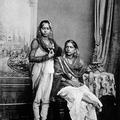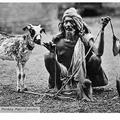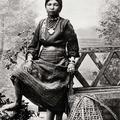Native Constable
The Indian Councils Act of 1861 was the foundation for the Indian Police Service, one whose fine exemplars was this Calcutta Policeman, which the emblem on his belt so proudly proclaims. His instrument of choice is the lathi, from the Bengali word










